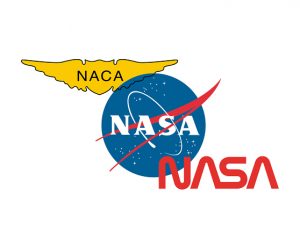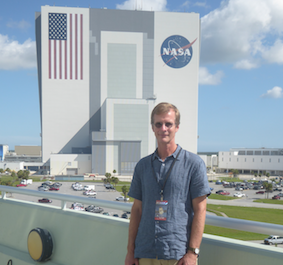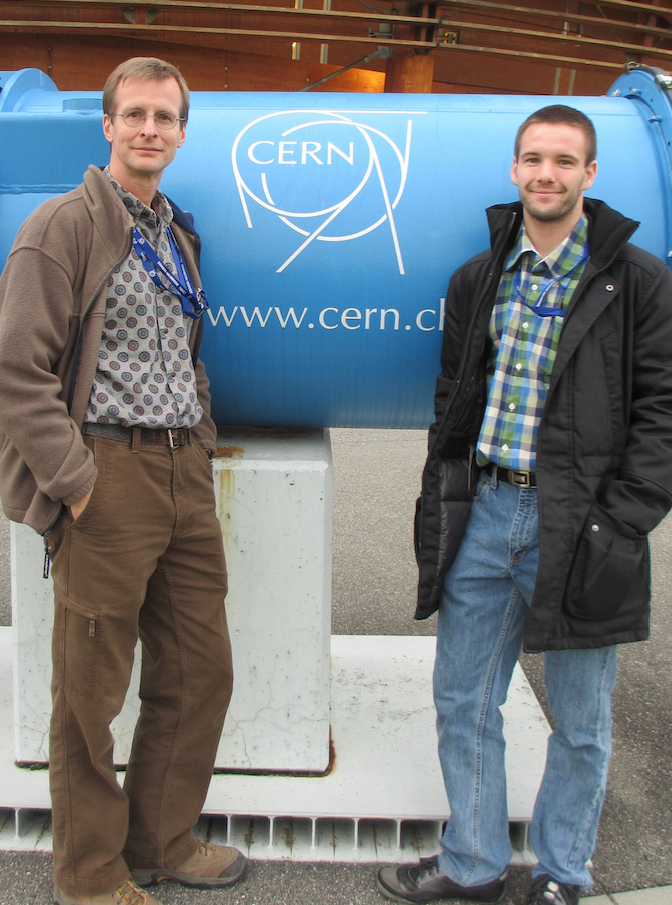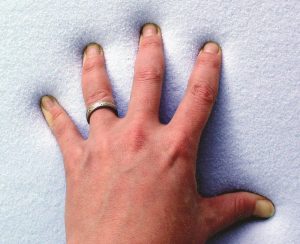By John Schlipp
Special to NKyTribune
Apollo missions boosted American pride. Did you realize, though, that NASA programs have also rocketed the American economy? From aerospace research to computers to Temper Foam, NASA has produced an excellent return on taxpayer dollars.
The spectacular Apollo missions of NASA were more than a novel diversion or a space race with the former Soviet Union. The practice of private sector business partnerships with federal agencies and the US military were in place since World War II. As a matter of fact, the Air Force supported the National Advisory Committee for Aeronautics (NACA) that eventually became the National Aeronautics and Space Administration (NASA) in 1958. Some of my family researched and worked on behalf of NASA, and the Atomic Energy Commission, on space program projects in my hometown of Dayton, Ohio.

Three historic insignias related to NASA, including its predecessor NACA. Courtesy of NASA.
Such collaboration between the private sector and the federal government inspired much innovation and countless inventions that not only supported the economy and enhanced our daily lives, but fostered quality careers. A study conducted by Midwest Research Institute (MRI) at the peak of the Apollo program in 1971 reported that the $25 billion invested in the research and development of the US space program between 1959-1969 returned $52 billion through 1970. Reports from NASA state that 400,000 Americans, and 20,000 industrial firms and universities, were associated with the space program at its peak through the end of the Apollo years. For example, 6,000 General Electric employees from 37 different locations contributed to Apollo program. This included building the computers and programming which monitored the Apollo spacecrafts.
The NASA space program not only affected the “southern crescent” along the Gulf of Mexico. The Cincinnati Tristate region, as well as that of the Dayton, Ohio/Miami Valley area to the north, gained a significant share of jobs linked to NASA. These included General Electric Aviation in Cincinnati, the Atomic Energy Commission’s Mound Lab in Miamisburg, Ohio, and Wright Patterson Air Force Base in Dayton.
The female mathematical geniuses of Margot Shetterly’s Hidden Figures book, and the popular 2016 movie of the same title, were not the only African Americans who played a significant role in the success of NASA. African-American physicist, George Sherard Jr. from Cincinnati, professionally contributed to the NASA’s space program too. Recently, the University of Cincinnati (UC) reported details of Sherard’s ties to the region, his UC degree. He went on to design computer programs for the Apollo guidance systems and command module error detectors. He worked for aerospace contractor Rockwell International in California during the entire Apollo program. George Sherard was born in Georgia. He moved to Maysville, Kentucky as a child, and later to Cincinnati, where he attended Walnut Hills High School. At Rockwell, Sherard reminisced how his assigned parking spot for his automobile was next to the Apollo astronauts.

Dr. Scott Nutter attended launch of ISS-CREAM payload at Kennedy Space Center in Cape Canaveral, Florida. Courtesy of Dr. Nutter.
After Apollo, Sherard returned to Cincinnati to work for General Electric Aviation. Earlier, during his teaching tenure at Howard University, Sherard hosted two speaking engagements for fellow physicist Albert Einstein. Sherard’s M.S. Thesis from the University of Cincinnati was published in 1942 and entitled “An Investigation of a Method for Measuring the Velocity of Sound in Solids.” Hear Sherard’s intriguing story concerning the importance of the Apollo program and his recollections here.
Today, NASA is experiencing a renaissance, as collaborative space commerce initiatives among industry, government, and academia are flourishing. Examples include weather forecasting, air traffic control, global communication, and broadcasting industries. Wilber Ross, Secretary of the US Department of Commerce, said at a recent commemorative event Apollo 50: The Role of Intellectual Property in Space Commerce that, “we have entered a new space age, driven by entrepreneurs who galvanized young engineers, scientists, and technologists with their vision for commercializing new space technologies.” Ross also reported that the public and private space program partnership is, “a growth industry, and it is exceedingly important to the U.S. economy.” For example, the Space Foundation reported that, “global space revenues hit the $414 billion mark in 2018…well on its way to becoming a trillion-dollar industry.”
Examples of the latest industry developments near Kennedy Space Center include OneWeb, a new high-tech mass producer of small satellites to provide broadband access globally, and Blue Origin and its New Glenn orbital launch vehicle. Development and production of the New Glenn is an example of the growing public and private partnerships as it is co-funded between Jeff Bezos (founder of Amazon) and the US Air Force. Blue Origin is another company tied to NASA commercialization partnerships. The space economy is indeed an engine of economic growth.
Public partnerships between NASA and academia are still as relevant today as the days of Apollo. Dr. Scott Nutter

Dr. Scott Nutter with NKU student Kirk Wallace, who assisted with ISS-CREAM research project. Courtesy of Dr. Nutter
The object of ISS-CREAM is to help astrophysicists study the origins of cosmic ray particles and the acceleration mechanisms that drive them to extreme energies as high as 1,000 trillion electron volts. “ISS-CREAM is designed to provide data in an energy region that connects ground-based and space-based measurements. The results will provide cosmic ray scientists a part of a larger picture to help us understand some of the most energetic processes in the galaxy,” says Dr. Nutter.
ISS-CREAM is a cosmic ray detector the size of a kitchen refrigerator attached to the International Space Station. The research instrument consists of five particle detectors to help determine exactly where “cosmic rain” originates. Cosmic rain is a steady stream of fast-moving electrons and atomic nuclei from outside our solar system. Nutter and his NKU team participated in building one of the five detectors in the whole ISS-CREAM device. It is known as the Boronated Scintillator Detector (BSD). The BSD offers electron/hadron discrimination using thermal neutrons produced by particles, which interact within the calorimeter to determine the energy of cosmic ray particles. The ISS-CREAM detector device launched on a SpaceX Falcon 9 rocket to the International Space Station from NASA’s Kennedy Space Center on August 14, 2017.
Preceding the launch of ISS-CREAM, the same cosmic ray particle detector concept was employed with NASA’s huge helium balloons hovering over Antarctica and collecting data from about 120,000 feet in seven flights between 2004 and 2016. The seven NASA balloon experiments attained ~ 161 days of cosmic ray data. Subsequently, without Earth’s atmospheric interference, the International Space Station mission permits up to ten times further cosmic ray exposure. NASA terminated data acquisition in early 2019, and Nutter reports that ISS-CREAM is currently in “safe mode.” However, the live time (actual time that data is acquired) has been ~248 days out of 534 operation days. There are plans to share the data acquired at some point via NASA information sites and other science publications.
The greatest local aspect of this mission is the amazing experience for college students. There were a dozen NKU students involved in various aspects, mostly software for simulations, including Tobel Atnafu, Stacy Brueneman, Brian Butler, Diana Coronado, Nick Vander Ende, Mark Henderson, Breanna Kenworthy, Carter Kring, Tyler LaBree, Brent Schleper, Tyler Straight, and Kirk Wallace. There is no doubt of the remarkable opportunity students gained from such experiences. Nutter believes the mission helps to create a stronger understanding of the fundamental processes in the universe and to learn more about what lies beyond our solar system. He says, “There is strong evidence that the highest energy cosmic rays we detect come from outside our galaxy. A better understanding of cosmic rays within our galaxy will help us to understand what those extragalactic cosmic rays are and where they come from.”
Besides NASA data collected and reported for projects such as the ISS-CREAM mission, patents are part of NASA’s intellectual property. NASA reports that its intellectual property and transfer of its technology
Each year NASA publishes a report entitled Spinoff. The annual reports have profiled nearly 2,000 spinoff examples since the publication started in 1976. For example, Temper Foam® was described as versatile padding made of viscoelastic for airplane seating in the first issue of Spinoff. Initially, temper foam was commercialized by Temper Foam Inc. in Cincinnati and Boston for seating, medical devices, and crash protection. Other companies attempted to capitalize on the temper foam with little success.
Meanwhile, Fagerdala World Foams, a Swedish company, invested 10 years in research and development of the Tempur-Pedic Swedish Mattress. Fagerdala introduced the Tempur-Pedic mattress in Sweden in 1991. The following year, they licensed North American distribution to Robert Trussell, Jr., a Lexington horse breeder and entrepreneur. Trussell learned of the opportunity via his European racing connections where he met a Swede horse racing professional who was in the mattress and bed pillow business. Trussell knew nothing about the mattress business but saw the market potential of temper foam in providing a better night’s sleep.

Initially labeled “slow spring back foam,” temper foam eventually became better known as Tempur-Pedic mattresses, pillows, and other cushion devices. They return to their original surface form once pressure is removed. Courtesy of NASA.
In a 1994 Lane Report, Trussell recalled the challenge in persuading early investors. “I had to convince them that although we lost money on something I know a lot about, which was horses, we were going to make money on something I know nothing about, which is mattresses.” His Tempur-Pedic, Inc. company in Lexington was an instant success as it generated more than $30 million sales by 1998. The foam fabric sleeping mattresses and accessories have become big business for a better night’s sleep as Trussell’s company recently merged with Sealy Corporation to create Tempur Sealy International. State-of-the-art mattresses and pillows abound under multiple trademarked brands, but the partnership between Fagerdala and Trussell were the first to develop and successfully mass-market the memory foam support surface for bedding as the Tempur-Pedic® brand and other related Tempur trademarks.
Tempur-Pedic’s own, new patents and trademark brands affirm the powerful attributes of early innovation and branding such as uniqueness, novelty, market viability, and so forth. Tempur-Pedic® was an early business to be designated as a “Certified Space Technology,” with a seal of the Space Foundation. In 2017, annual sales topped $1 billion.
Temper foam is only one example of the many spinoffs resulting from research at NASA. No doubt NASA’s future technologies will continue to generate spinoffs and produce public benefits. For an engaging view of other spinoff examples, see here.
The NASA Home & City interactive web app allows you to explore some of the spinoff technologies you can find in your everyday life, demonstrating the wider benefits of America’s investments in its space program.
US Commerce Secretary, Wilbur Ross, recently affirmed “protecting the intellectual property of new space companies, entrepreneurs, inventors, and individuals is essential for US success. Space is benefitting from innovative cost-cutting at the same time as impressive technological breakthroughs. The whole concept of space technology is being reinvented.”
Being aware of intellectual property places everyone on the leading edge of any innovative or creative endeavor from inventors of space science and technology to creators of art or music. NKU’s Intellectual Property Awareness Center (IPAC) at W. Frank Steely Library is available to assist everyone from inventors and entrepreneurs to educators and musicians. For example, the IPAC is partnering with the Northern Kentucky Chamber of Commerce to present, “Trademark Basics: What Your Small Business Should Know Now, Not Later. Hear Craig Morris, Manager Attorney for Trademark Educational Outreach of the US Patent & Trademark Office, overview trademarks, copyright, patents, and more.
Details about trademark selection, searching, and registration is also planned. See the NKY Chamber site for additional information and registration for this workshop.
John Schlipp is an Intellectual Property Librarian and Professor of Library Science at W. Frank Steely Library at NKU. He is the manager of the IPAC: Intellectual Property Awareness Center at Steely Library. The IPAC is a designated PTRC: Patent & Trademark Resource Center representing the U.S. Patent & Trademark Office. The IPAC offers free assistance to everyone from inventors to musicians, to understand and utilize patents, trademarks, copyrights, and more.
* * *
For other Apollo articles featured in Our Rich History, see:
50th Apollo Flight Aniversary
First moon walker spurred imaginations
























